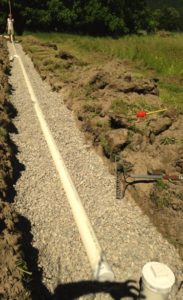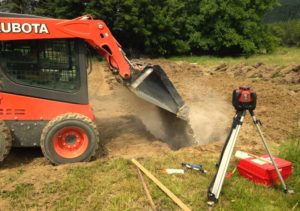Seepage Beds & Trenches
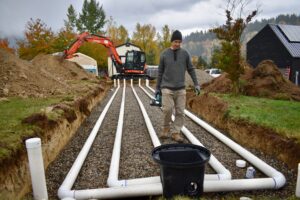 A traditional seepage bed installed in Shoreacres in 2022.
A traditional seepage bed installed in Shoreacres in 2022.
Seepage beds are a traditional and effective means of treating wastewater. Many seepage beds around BC are still functioning well after 50+ years of operation – a testimony to the success of the design. Seepage beds often take less space than infiltrator chamber systems. Sometimes you can’t use a seepage bed though because soils drain either too slowly (clay and silt) or too fast (extremely gravelly sand for example.) I’ve probably installed about 80 of these in the past 8 years.
In a gravity seepage bed design, effluent trickles through holes in perforated sewer pipe (usually 4″) into a bed of drain rock. The perforated sewer pipe is installed dead-level on the drain rock. You can see this in a number of the photo’s below. Generally speaking, three or more 12 yard dump trucks of washed, clean drain rock is required for these systems.
Trenches are just a narrow variant of the seepage bed design. Most commonly designed 36″ wide in this neck of the woods. Trenches are often used where the natural grade is steeper or when the designer wants to spread out the distribution of the effluent more when soil conditions are slightly less than perfect for wastewater disposal.
Appledale, May 2016
I’ve been at this a long time! On this one, I acted as both designer and installer.
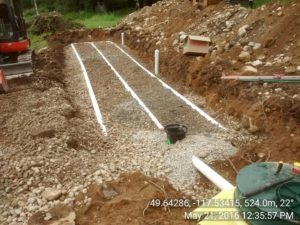
Mtn. Station, Nelson, September 2016
This is a very large seepage bed (65′ long) designed for a four bedroom house. The second photo shows a “flout tank” being installed after the septic tank. A flout tank is used to send effluent from the septic tank to the drainfield in measured doses which improves the performance of a drainfield substantially. A flout tank accomplishes this without using any power like a pumped system would.
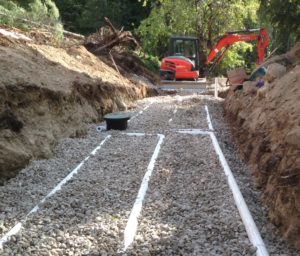
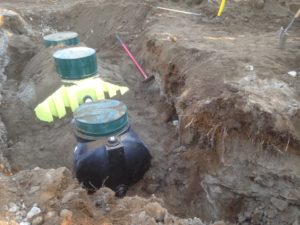
North Shore, Sept 2016
Sometimes there isn’t room to lay out and plumb the whole seepage bed all at one time. A few times now we’ve had to build the whole seepage bed 10 feet at a time, backfilling as we go. The site below was incredibly tight: 70′ property width, mature gardens, trees, a greenhouse, multiple sewer outlets from the older home – and a gasline to work around. It looked like a moonscape for the five days it took to complete but by late Friday night, it came together nicely!
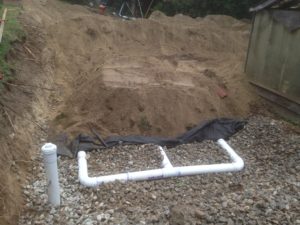
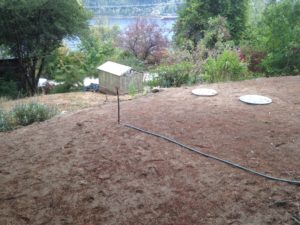
Balfour, July 2016
This is a very large system with two seepage beds and two septic tanks. It is designed to service 5 cabins.
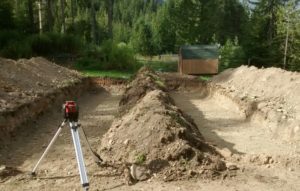
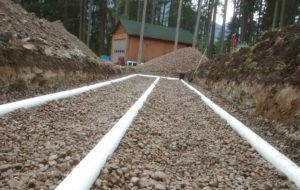
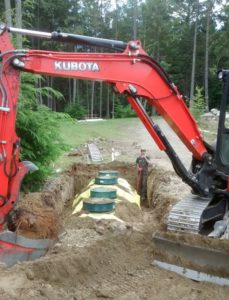
Harrop, October 2016
This is a uniquely designed seepage bed. It is designed for an events space that sees intermittent and seasonal usage. This seepage bed is just 5′ wide but has 24″ of drainrock underneath the perforated pipes. The extra deep drainrock creates “storage capacity” for periods of high flow when events are occuring.
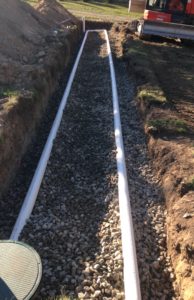
Fruitvale, October 2015
You can’t see it in these photo’s but this seepage bed is dog-legged shaped to fit into a tight area.
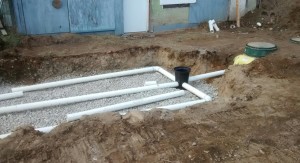
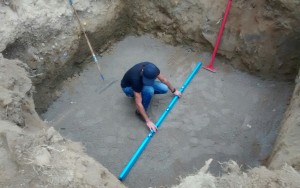
Crescent Valley, September 2015
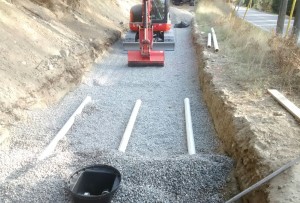
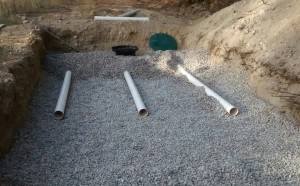
Thrums, June 2017
Here is the mother of all trench systems! 4x trenches 80′ long and centre-fed. This system was installed as shallow as possible in the soil. The final grade on this system was about 8″ above the top of the perforated pipe. In the second photo we’re using the skidsteer to fill the trenches – MUCH FASTER!
